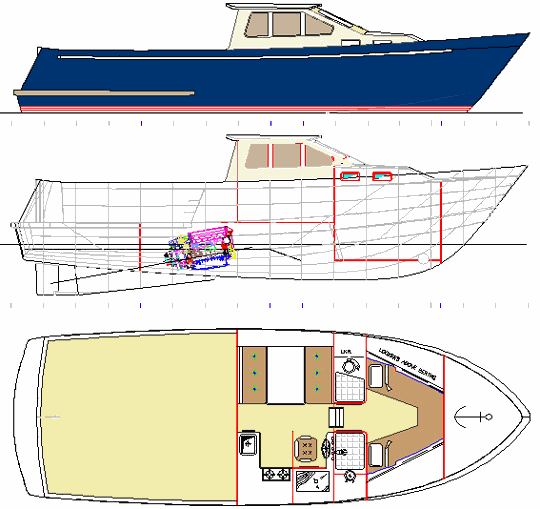
Unlocking the Sea: A Fresh Look at Affordable Boat Plan Kits
Building your own boat is a dream for many, a blend of woodworking skill, engineering ingenuity, and the irresistible allure of the open water. But the cost often presents a significant hurdle. Affordable boat plan kits offer a pathway, but choosing the right one, and navigating the often-uncharted waters of the process, requires more than just a cursory glance at a website. This article delves beyond the usual specifications, addressing often-overlooked aspects to help you chart your course to success.
Beyond the Blueprint: The Unspoken Costs (and How to Mitigate Them)
Most boat plan kit reviews focus on price. While crucial, this is only the tip of the iceberg. Let's address some less-discussed financial realities.
Q: What hidden costs should I anticipate beyond the plan kit itself?
A: Think beyond lumber. You'll need hardware (fasteners, hinges, fittings â€" the seemingly small things add up!), finishing materials (paint, varnish, sealant), tools (if you don’t already have a well-stocked workshop), and potentially specialized equipment (like a router or a planer for finer work). Factor in transportation costs for materials, and don't forget the potential for mistakes â€" extra lumber for re-cuts is a smart budget buffer. Researching prices beforehand and creating a comprehensive materials list is essential.
Q: How can I minimize these unexpected expenses?
A: Strategic sourcing is key. Explore local lumber yards for deals, consider reclaimed or recycled wood for non-structural elements (reducing cost and environmental impact), and compare prices across multiple hardware stores. Borrowing or renting specialized tools from friends or local tool libraries can also significantly reduce expenditure. Finally, detailed planning and accurate measurements from the start reduce the risk of costly mistakes.
Choosing the Right Plan: It's Not Just About Size
The market is flooded with plans â€" from simple kayaks to complex sailboats. Beyond the obvious size considerations, other factors significantly influence your success and enjoyment.
Q: What are some often-overlooked aspects of choosing a boat plan?
A: Consider your skill level honestly. A complex design might seem appealing, but attempting it without sufficient experience can lead to frustration and wasted resources. Read reviews focusing on builder feedback â€" did others find the instructions clear? Were there significant design flaws? Look beyond just the pretty pictures. Evaluate the materials list carefully â€" is it readily available in your area, or will you incur significant shipping costs?
Beyond the Boat: Community and Learning
Building a boat is a journey, not just a destination. Leveraging the power of community can make all the difference.
Story: The Unexpected Mentor
John, a retired engineer, initially felt intimidated by boat building. However, he joined a local woodworking forum and connected with experienced boat builders. Their guidance, troubleshooting support, and shared experiences transformed what felt like an insurmountable task into a rewarding journey. John not only completed his boat but also became an active mentor himself, giving back to the community that helped him.
Q: How can I leverage community resources for support and learning?
A: Online forums, local woodworking clubs, and even university extension programs often offer valuable resources. Sharing your progress, asking questions, and connecting with experienced builders can accelerate your learning curve and help you avoid common pitfalls. Don’t underestimate the power of collaborative learning and the encouragement of a like-minded community.
Sustainability and Innovation: Building for the Future
Boat building presents an opportunity to explore sustainable practices and innovative design solutions.
Q: How can I incorporate sustainable practices into my boat-building project?
A: Choose sustainably sourced lumber (look for certifications like FSC). Consider using eco-friendly finishes that minimize environmental impact. Explore alternative materials like recycled plastics or bamboo for non-structural components. Careful design choices that minimize material waste further contribute to a more sustainable approach.
Building your own boat is a challenging yet deeply satisfying endeavor. By addressing these often-overlooked aspects â€" from hidden costs to community engagement and sustainable practices â€" you can significantly increase your chances of success and transform your dream into a rewarding reality. The open waters await!





